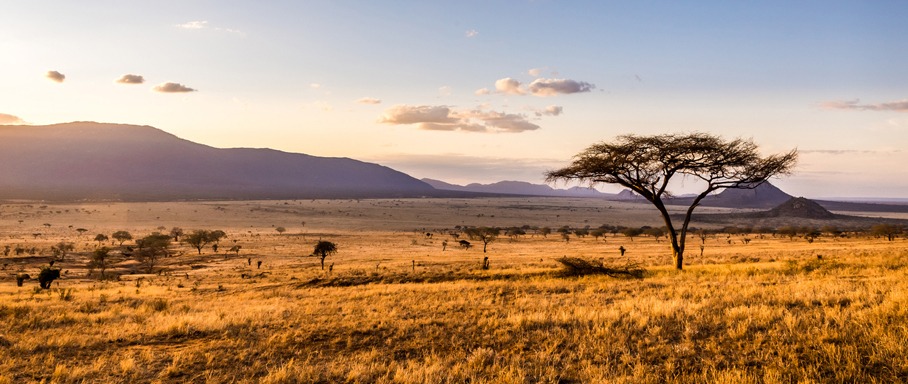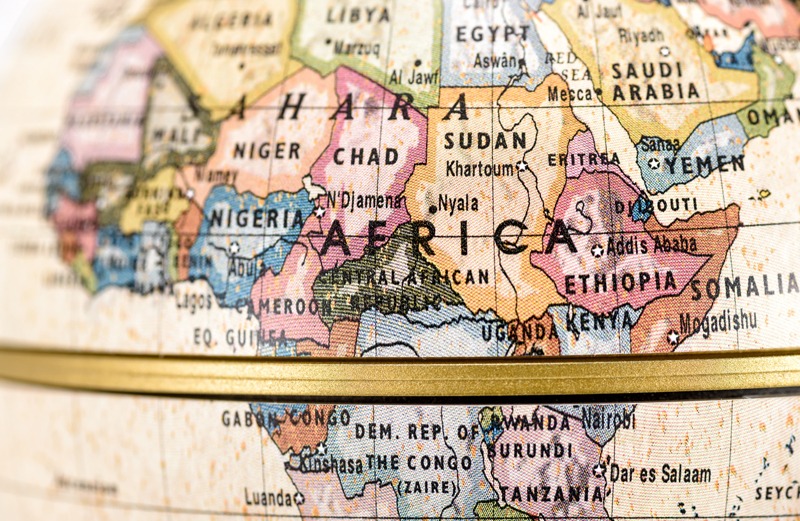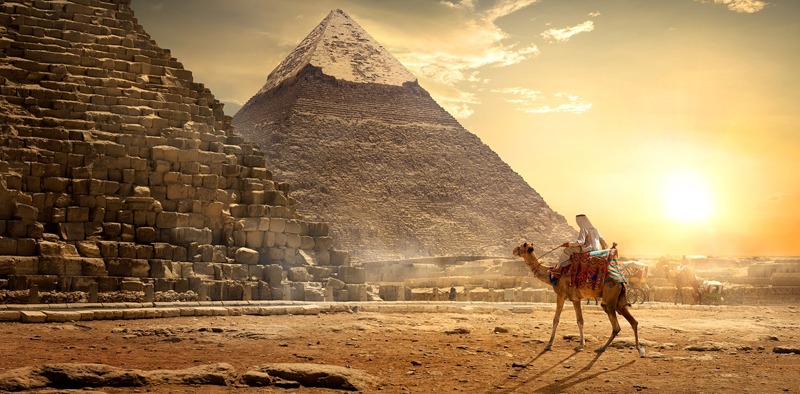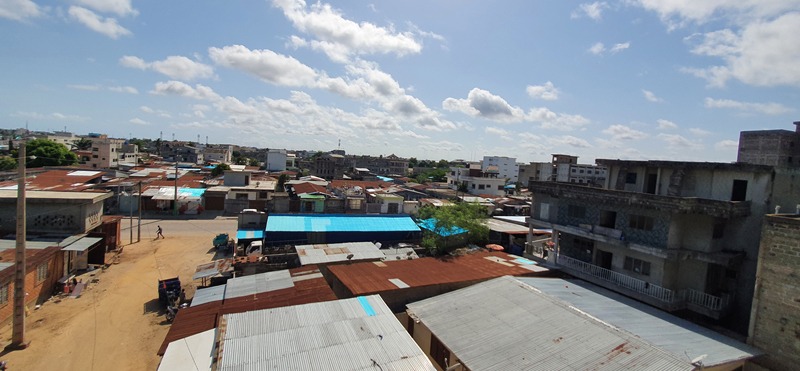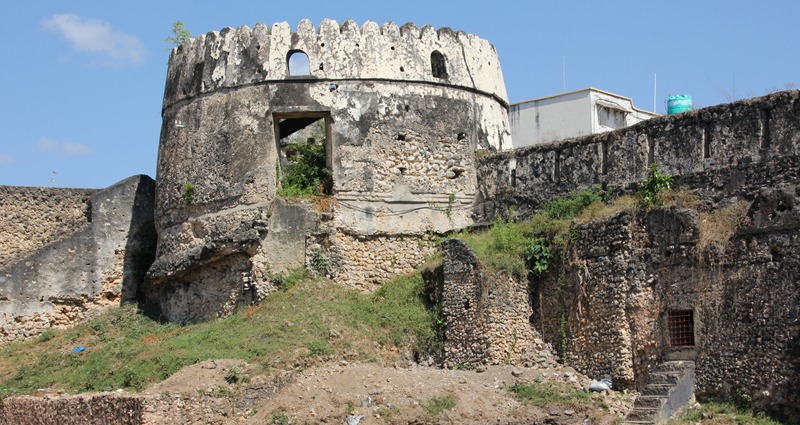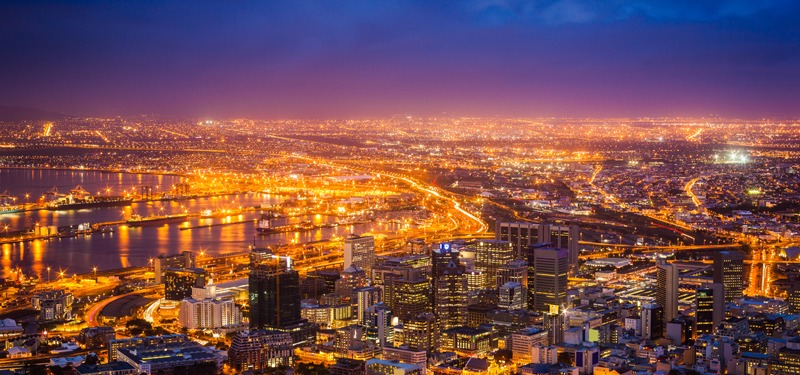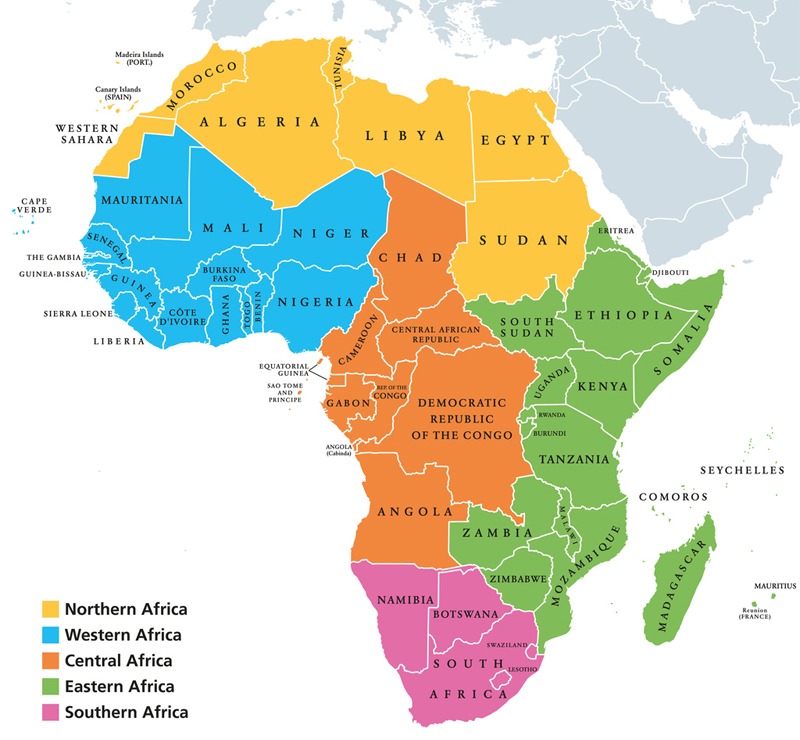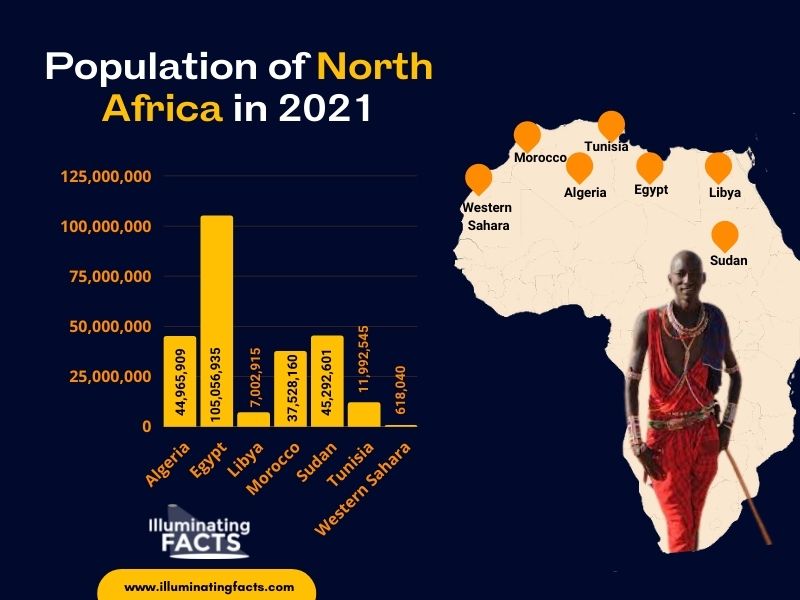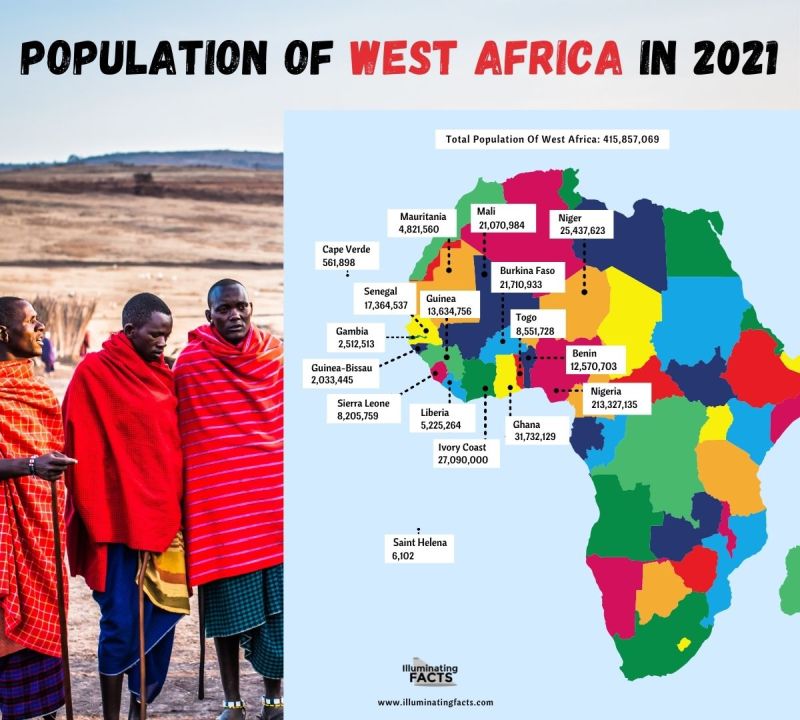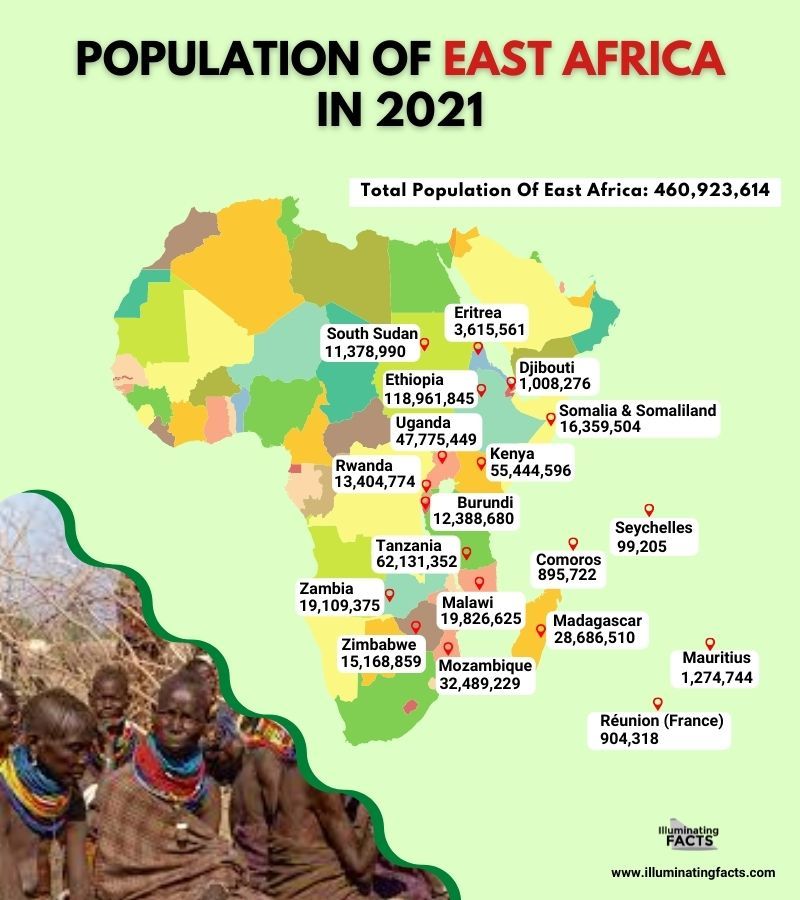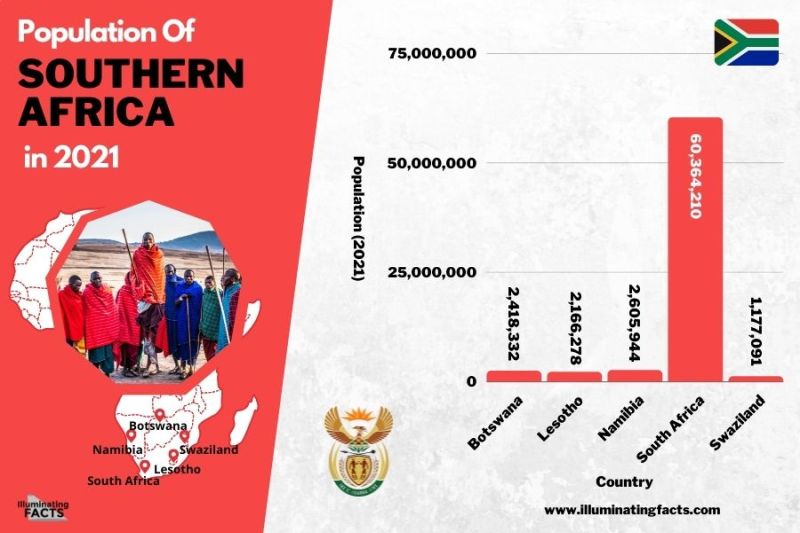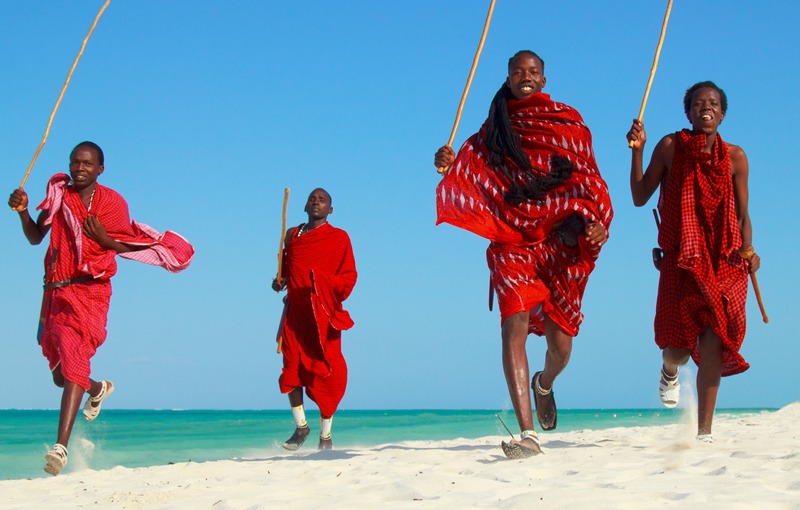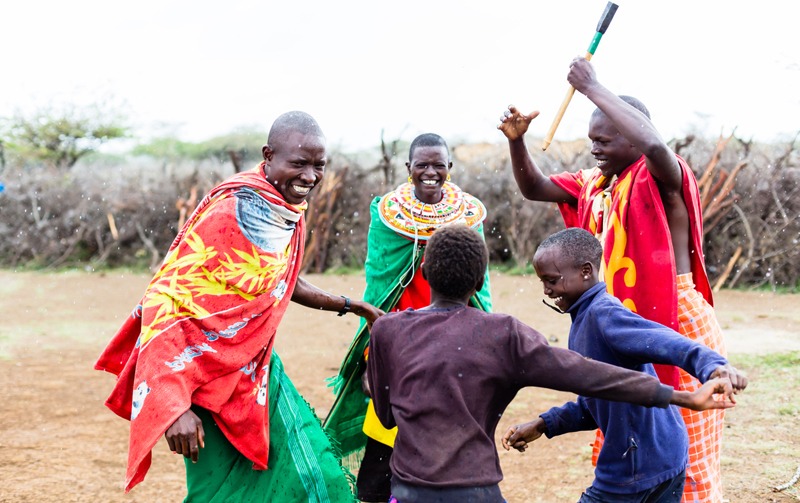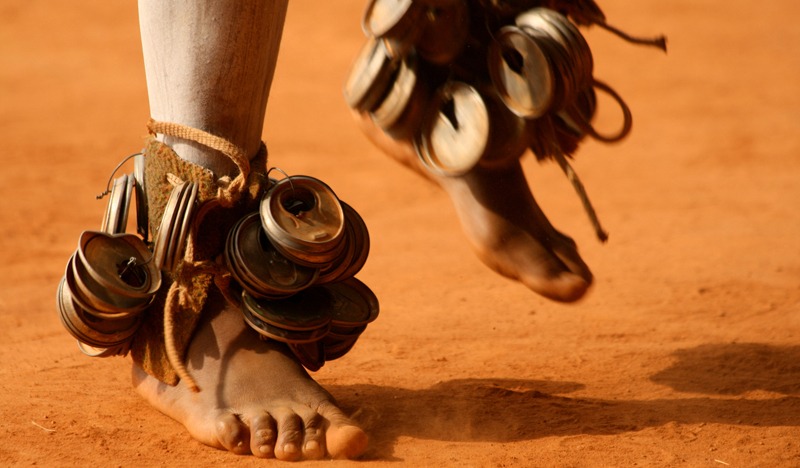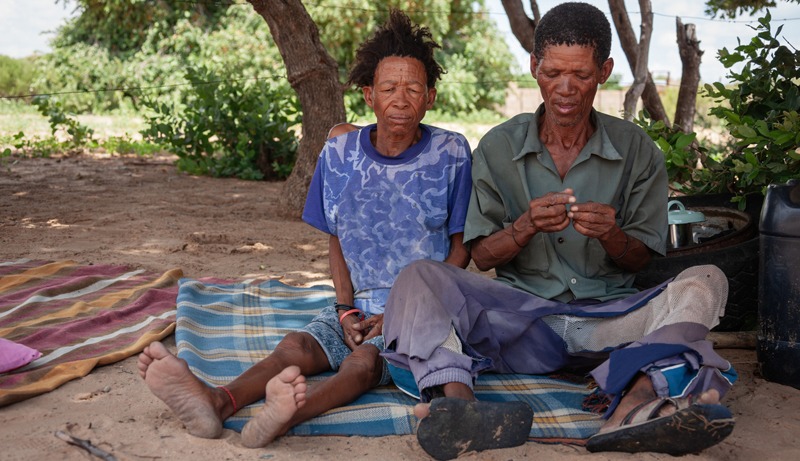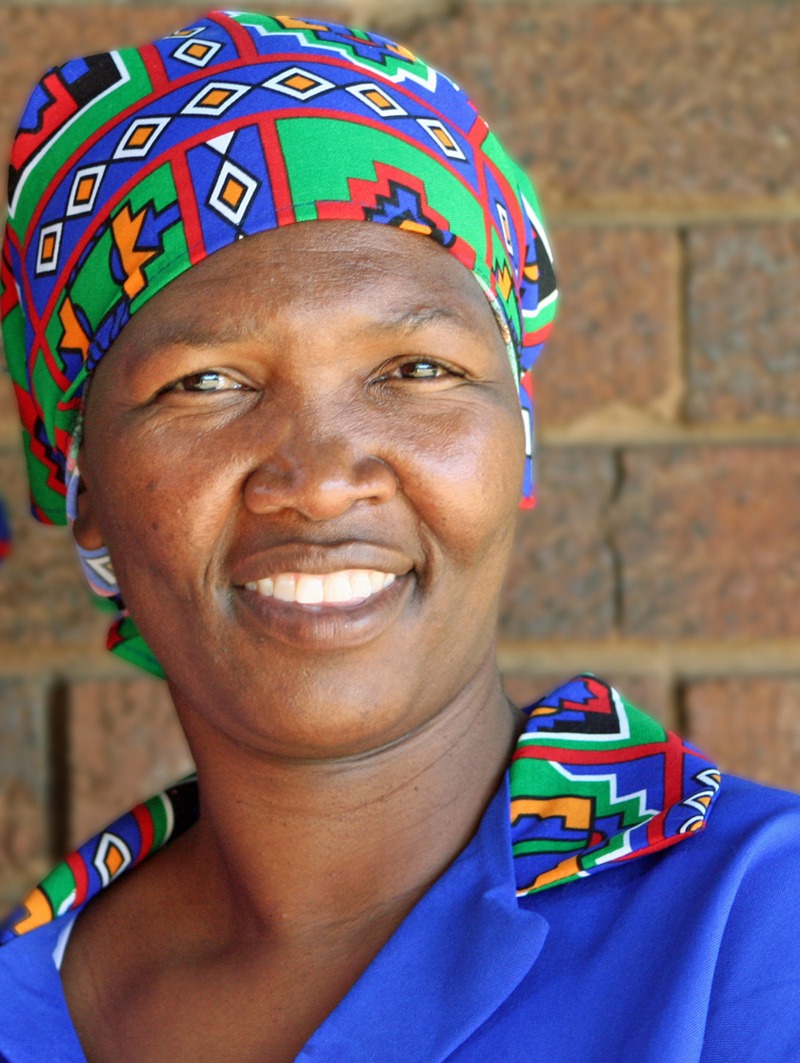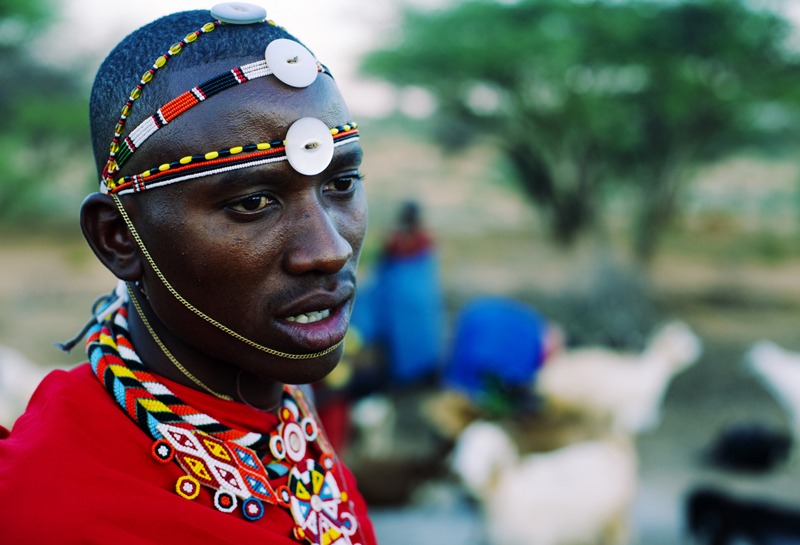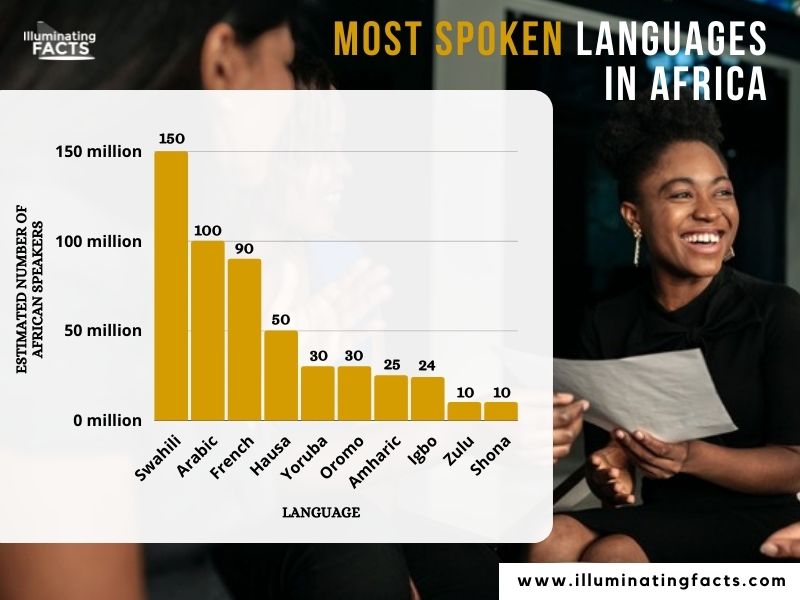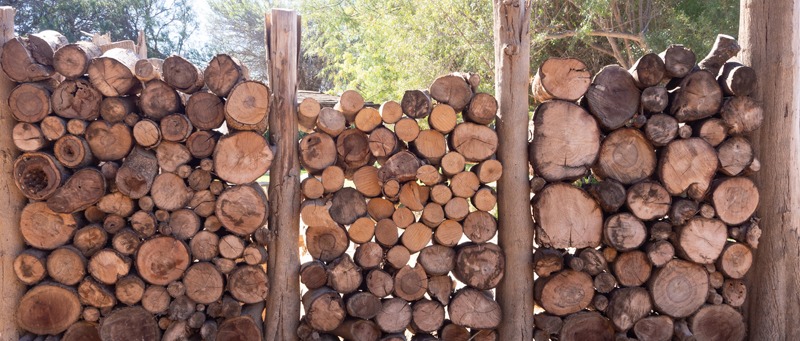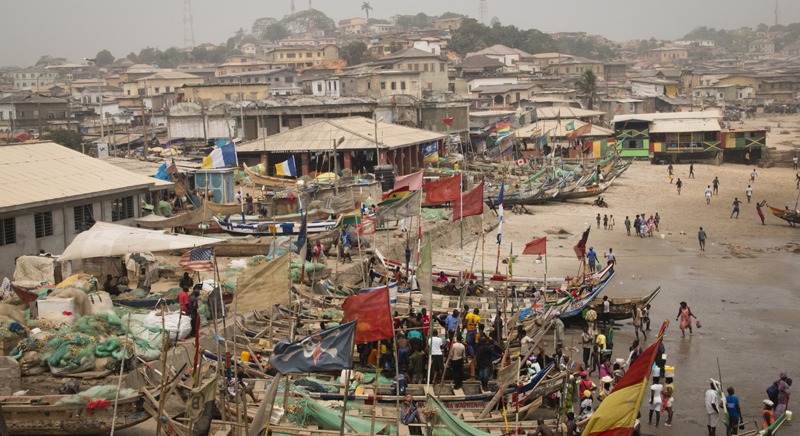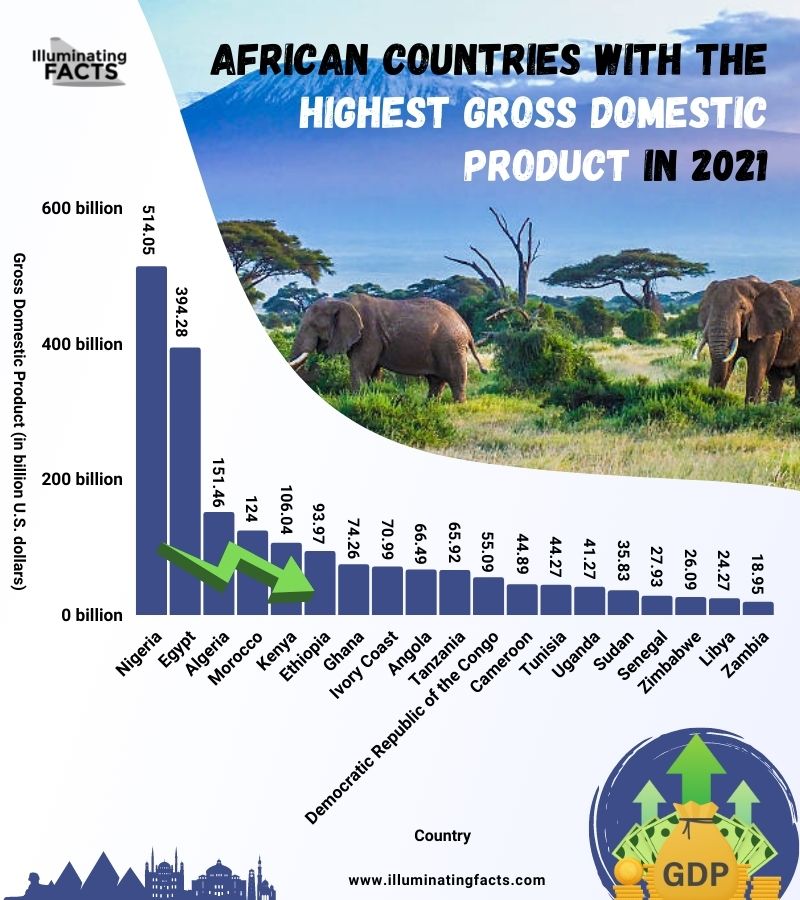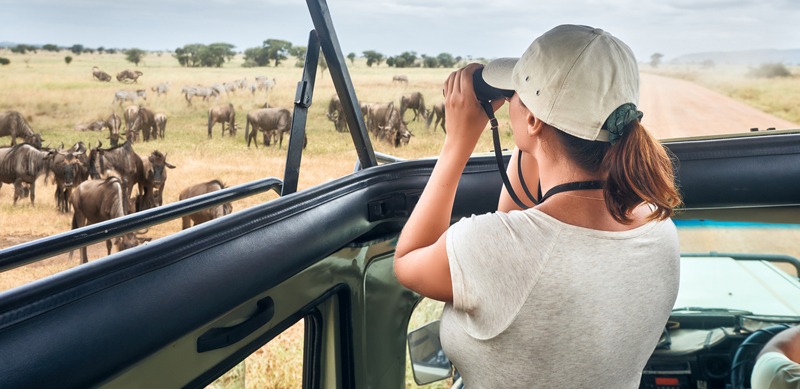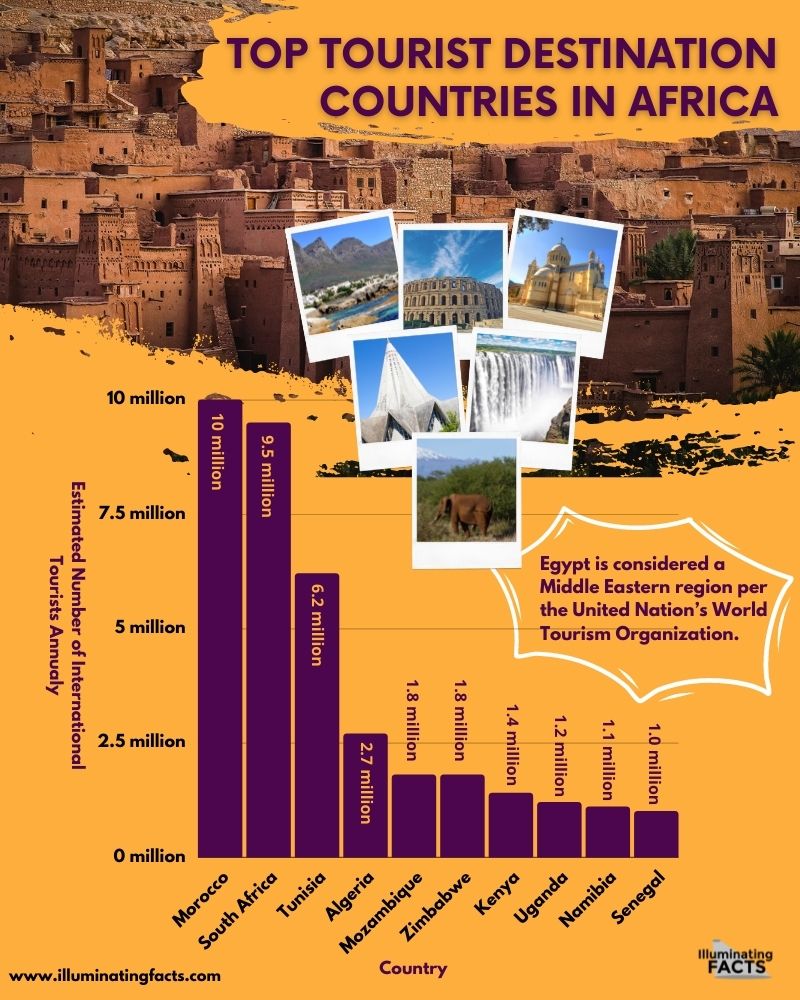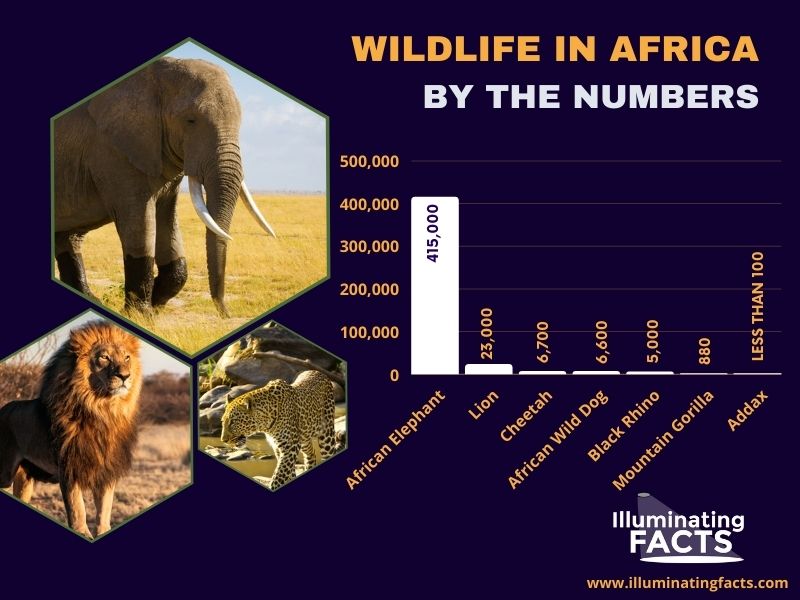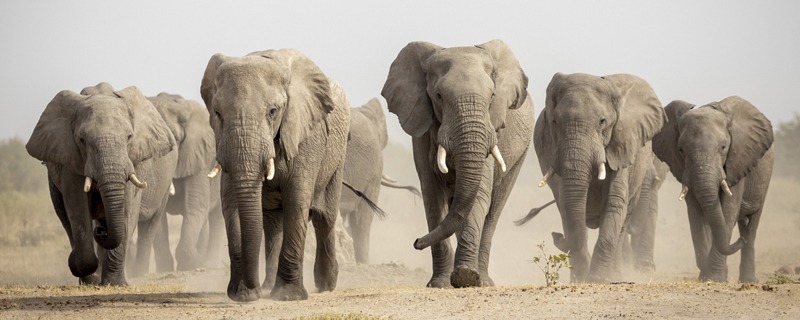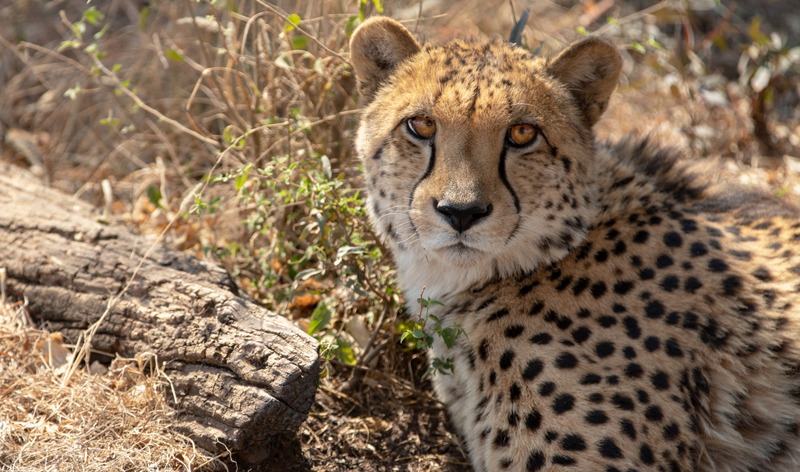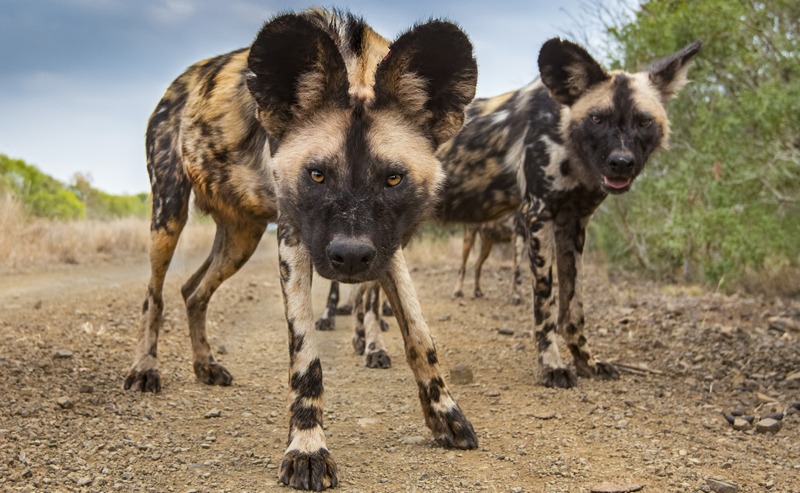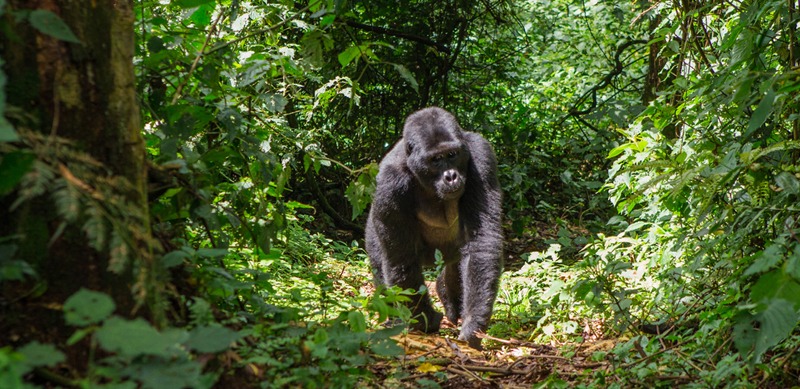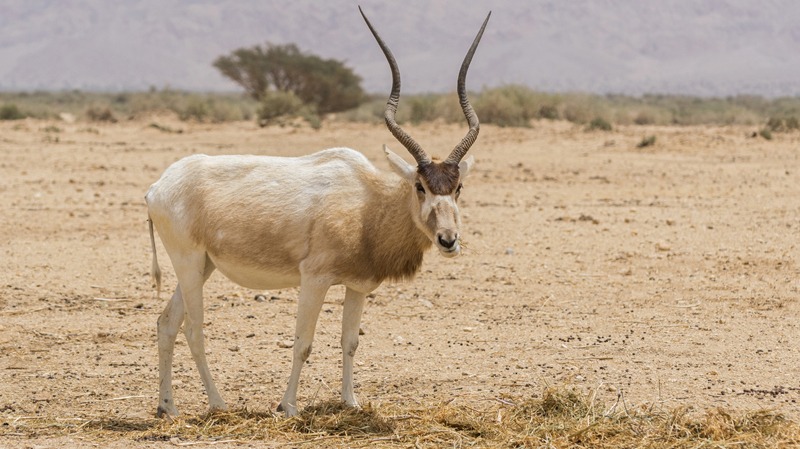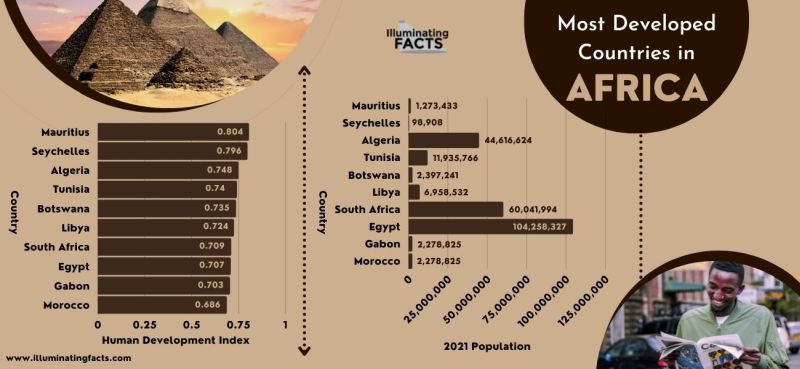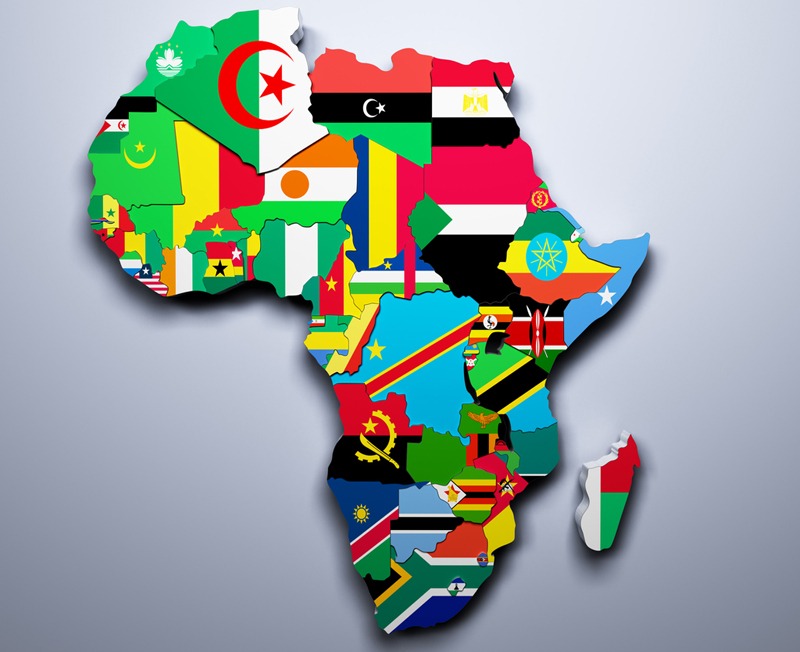Background
Next to Asia, Africa is the second-largest continent, both by size and number. It covers about one-fifth of the Earth’s total land surface. On the west, the continent is bounded by the Atlantic Ocean, on the north by the Mediterranean Sea, on the east by the Red Sea and the Indian Ocean, and on the south by the Atlantic and Indian oceans. Billions of people in the world call Africa their home. If you are interested in learning more about this continent, you’re in the right place.
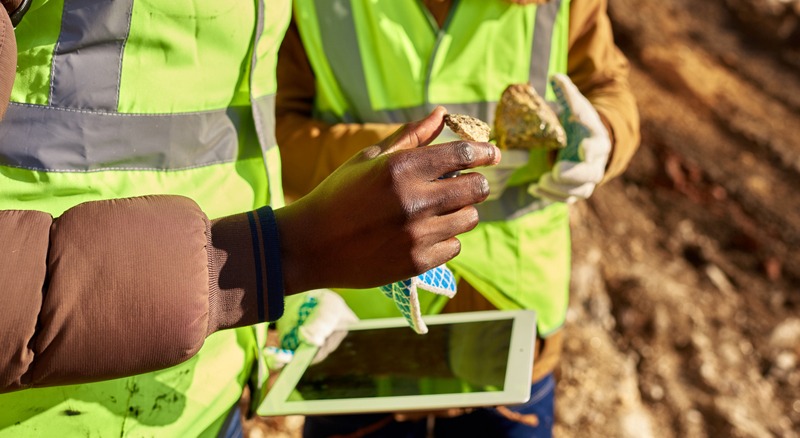
miners inspecting minerals
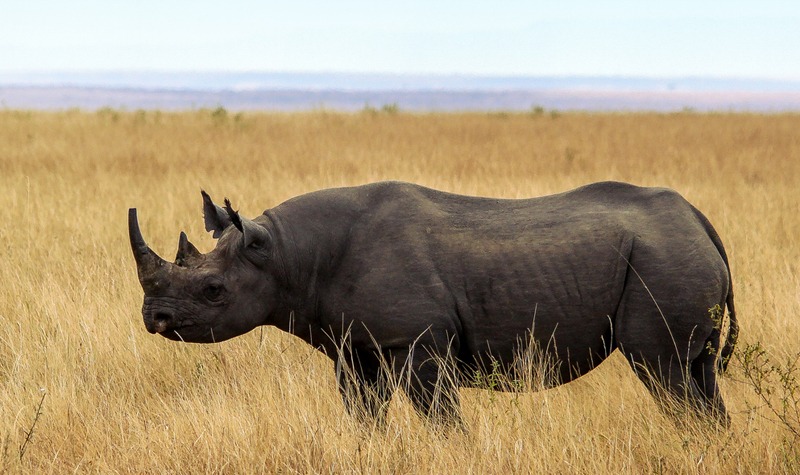
black rhino on the plains of Africa
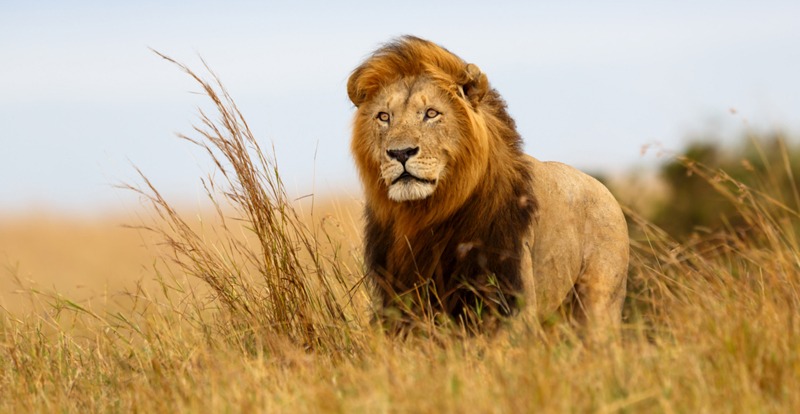
a lion in Masai Mara
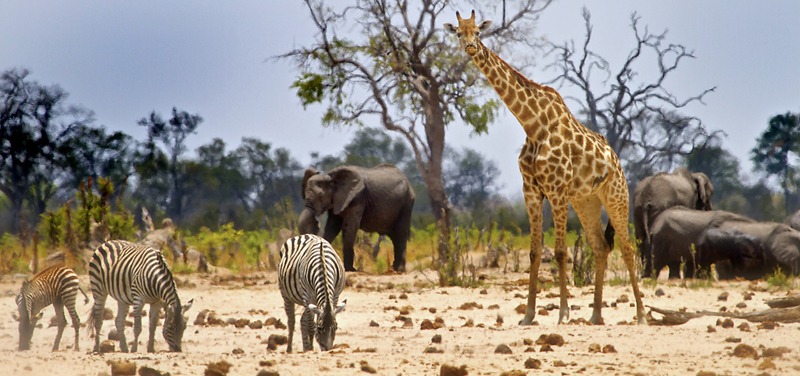
wild animals in Zimbabwe
This post includes a lot of information about Africa, such as its history, people, culture, languages, economy, travel and tourism, wildlife, and some interesting facts that will blow your mind. It also includes statistics and numerical data about Africa that are quite fascinating to learn. With that, let us begin with its rich history.
History of Africa
The exact origins of the word “Africa” are unknown, but much about its history is known. According to researchers, the Romans first used the word to describe the part of the Carthaginian Empire, which lies in what is known today as Tunisia. The Romans divided North Africa into multiple provinces when they conquered Carthage in the 2nd century BCE. This gave them jurisdiction over most of North Africa. Among the provinces were Africa Proconsularis, Northern Tunisia, and Africa Nova, or much of present-day Algeria, called Numidia.
Many historians agree that the Roman use of the term “Africa” for parts of Tunisia and Northern Algeria ultimately, almost 2000 years later, gave the continent its name. The Romans diversely named these people “Afri,” “Afer,” and “Ifir.” However, where exactly the Romans got the name “Africa” from is still in dispute.[1]
Ancient Africa
Many scientists believe that Africa was the birthplace of mankind. Modern humans hunted and gathered food using stone tools by 100,000 BC. By 5000 BC, farming had spread to North Africa. Cattle were herded by people, and they also grew crops. During those times, the Sahara Desert was not a desert. It was a green and fertile area, which gradually grew drier and turned into a desert.
At around 3200 BC, writing was invented in Egypt. They also made tools and weapons using bronze. However, when the Egyptian civilization arose, the Sahara Desert cut most of Africa from Egypt and other early civilizations. Due to the lack of good harbors, sub-Saharan Africa was also hampered, making sea transport more challenging.
Stone tools and weapons were continuously used by farmers in Africa until around 600 BC, when the use of iron reached North Africa. And by 500 AD, the tools and weapons reached what we now know as South Africa.
The city of Carthage was founded in Tunisia in around 480 BC by the Phoenicians from what is known today as Lebanon. Later on, Carthage fought wars with Rome. When 202 BC came, the Romans defeated the Carthaginians during the battle of Zama. The city of Carthage was destroyed by Rome in 146 BC and making its territory part of their empire.
Along the Nile, Egyptian influence spread, and the kingdoms of Nubia and Kush arose in what we know today as Sudan. Southern Arabian influence then spread to Eritrea, Eastern Sudan, and Northern Ethiopia. The domain of Axum in the region was civilized by 50 AD. It traded with Rome, India, and Arabia. When the 4th century came, Axum became Christian.[2]
Africa in the Middle Ages
The Arabs conquered Egypt in 642 AD. From 698-700 AD, they took Tunis and Carthage and soon controlled all the coasts in North Africa. The Arabs were Muslims, and the whole coast of North Africa was soon converted to Islam. Ethiopia remained Christian. However, it was cut off from Europe by the Muslims.
Organized kingdoms emerged in northern Africa after 800 AD and traded with the Arabs further north. The trade led to the spread of Islam to other parts of Africa. Luxury goods and salt were brought by Arab merchants, and in return, they bought gold and slaves from the Africans.
Ghana was one of the earliest African kingdoms. It also included parts of Mali and Mauritania and the modern country of Ghana. By the 9th century, Ghana was referred to as the land of gold. However, Africans from further north destroyed it in the 11th century. The city of Ife in Southwest Nigeria then became the capital of the great kingdom. Craftsmen from Ife created terracotta sculptures and bronze heads from the 12th century. However, when the 16th century came, Ife declined.
Benin was another African state. Compared to the modern country, the medieval kingdom of Benin was bigger. It has been a rich and powerful country since the 13th century. During the same time, the kingdom of Mali was founded. When the 14th century came, it also became rich and powerful. It also included the city of Timbuktu, which used to be a busy trading center where hold, salt, horses, and slaves were bought.
In the 16th century, the kingdom of Mali was destroyed by Songhai, which was a kingdom located east of Malo on the River of Niger. It reached a peak of about 1500 AD. But in 1591, Songhai was defeated by the Moroccans, and their kingdom eventually broke up.
Kanem-Bornu was another great North African state, and it can be found near Lake Chad. It became popular in the 9th century and stayed independent until the 19th century. Arabs also navigated down Africa’s east coast, and some settled there. They also founded states like Mogadishu and also settled in Zanzibar.
Some people in southern Africa created organized kingdoms. In 1430, amazing stone buildings were built in Great Zimbabwe. Ethiopia flourished in the Middle Ages. Around 1200, the popular church of St. George was built. In the intervening time, the Portuguese were exploring the coast of Africa. They reached the Azores in 1431, the mouth of the River Congo in 1445, and the Cape of Good Hope in 1488.[2]
Africa in 1500-1800
Europeans started to transport African slaves across the Atlantic in the 16th century. But slavery was not new in Africa because Africans had sold other Africans as slaves to the Arabs for centuries. The trans-Atlantic slave trade increased until it was huge.
When the 18th century came, ships from Britain took manufactured goods to Africa. Slaves were taken from there to the West Indies and took sugar back to Britain. This was referred to as the Triangular Trade. Some Africans were sold as slaves because they committed crimes, while others were captured in raids by other Africans. However, Europeans were not allowed to travel inland to find slaves. Instead, the slaves were brought to the coasts. Those who were not sold were either killed or used as slaves by other Africans.
From the 16th to the 18th centuries, pirates from the North African coast fleeced Portuguese and Spanish ships and took slaves from the coasts of Europe. A group of people called Turks conquered most of the North African coast in the 16th century. They captured Egypt in 1517, and most of the coast was in their hands by 1556.
South Africans further continued to build powerful kingdoms. In the 16th century, the empire of Kanem-Bornu expanded using guns bought from the Turks. But at the same time, Ethiopia declined in power and importance, but it survived.
Meanwhile, the first European colonies were founded in Africa. During these times, the Portuguese settled in Angola and Mozambique. When 1652 came, a colony was founded by the Dutch in South Africa.[2]
Africa in the Modern Times
When the 19th century came, European states tried to stop the slave trade. In 1807, it was banned by Britain. In the late 19th century, Europeans seized most of Africa. The British took the Dutch territory in South Africa in 1814. In 1830, northern Algeria was invaded by France, but the colonization only became serious in the late 19th century when Europeans “carved up” Africa.
Namibia, Togo, and Cameroon were taken by the Germans in 1884 and Tanzania in 1885. Belgium, on the other hand, took what is now known as the Democratic Republic of Congo. In 1896, Madagascar was taken by France, and they also expanded their empire in northern Africa. They also took Morocco in 1912, while Italy took Libya.
The British took control of Egypt in 1914. During that time, all of Africa was in the hands of Europeans, except Ethiopia and Liberia. Further south, Zimbabwe, Malawi, Uganda, Kenya, and Zambia were taken by the British. But Angola and Mozambique remained Portuguese.
In the early 20th century, the viewpoint toward imperialism started to change in Europe. Also, churches provided schools in Africa, and increasing numbers of Africans became educated. However, they became so impatient for independence that the movement for African independence became unstoppable. In the late 1950s and 1960s, most African countries became independent. In fact, in 1960 alone, 17 countries in Africa gained their independence. However, Angola and Mozambique did not become independent until 1975.
Africa started to boom in the early 21st century. At the present time, the economies of most African countries are growing fast. Many tourists and investors are also pouring into the continent. Today, Africa is rapidly developing.[2]
Countries in Africa
Conventionally, Africa is divided into five main geographical regions or subregions. These are North Africa, West Africa, Central Africa, East Africa, and Southern Africa. There are 48 countries that share the area of mainland Africa, and an additional six island nations, which are also considered part of the continent.
In total, 54 sovereign African countries and two disputed areas, Somaliland or the autonomous region of Somalia, and Western Sahara, occupied by Morocco and claimed by the Polisario. Let’s learn about the countries in each region in Africa.
North Africa
North Africa or Northern Africa is the portion of the continent along the coast of the Mediterranean Sea, excluding Sudan. It consists of 6 countries and one disputed territory, Western Sahara. Based on the United Nations Population Division, about 250 million people will live in Northern Africa in 2021. Below are the countries encompassed in North Africa, including their capital and population as of 2021.[3]
West Africa
West Africa refers to the countries north of the Gulf of Guinea in the continent’s north-western part. It is located in the southern part of the hump of Africa. It is bounded by the Sahara Desert and the Sahel zone in the north. It consists of 16 countries in West Africa and one British Overseas Territory, which is Saint Helena. Based on the UN Population Division, around 412 million people are living in West Africa as of 2021. Below are the countries included in West Africa.[3]
Central Africa
Central Africa or Middle Africa is the tropical central part of the continent. It comprises 9 countries, including the island nation of Sao Tome and Principe. According to the UN Population Division, approximately 185 million people live in Central Africa as of 2021.[3] Below are the different countries that are found in Central Africa.
East Africa
East Africa is the part of the African continent that includes Madagascar and other smaller islands. It may also refer to the former British colonial areas of present-day Tanzania, Uganda, and Kenya. Roughly 457 million people live in East Africa as of 2021. Below are the countries that are included in this region.
Southern Africa
Southern Africa is bounded by the South Atlantic Ocean in the west and the Indian Ocean in the east. It includes 5 countries: Botswana, Lesotho, Namibia, South Africa, and Swaziland. According to the UN, around 68 million people will live in Southern Africa in 2021. Check the graph below for more details about each country in Southern Africa.
African Tribes and Culture
Since Africa is such a massive place, African culture is a wildly diverse subject with intriguing tribes and traditions. Also, the continent has been colonized and pillaged for over 300 years, making it rich and diverse. This post will also give you more information about Africa’s most fascinating tribes and traditional cultures.
As we’ve mentioned, Africa has 54 sovereign countries, accounting for about 16% of the world’s population. That is more than 1.2 billion people. For some, it might be easy to standardize and talk about “African people,” but the truth is there are more than 3,000 diverse African tribes within those countries.
Of course, we won’t be able to enumerate and discuss all of those African tribes in this post, but we are happy to share with you some of them.
Maasai
The Maasai is a tribe in Kenya and Tanzania. It has a population of more or less 840,000. The red-clothed Maasai is synonymous with the Great Plains and savannas of Africa. They are popular warriors and pastoralists who roamed wild East Africa for hundreds of years.
The first Maasai, named Maasinta, received a gift of cattle from Ngai, the sky god, who brought them to earth on a leather thong. Since then, cattle have been viewed as sacred, and their value is matched only by the value of their children. The savannah land that makes up the popular parks of Amboseli, Serengeti, Tsavo, Ngorongoro, and the Masai Mara, was all once the wandering range of the Maasai people.
The Maasai have fought to preserve their way of life despite the pressures of the modern world. This led many east African safari to overflow with the sight of colorful Maasai, dancing the adumu, walking along roads, and herding their cattle. One of the most popular traditions among the Maasai is the jumping dance called adumu, spitting, drinking blood, and wearing colorful shuka, the vibrant colored cloth.[4]
Himba
In northwest Namibia, there is a tribe called the Himba. The population in their tribe is more or less 50,000. They are known to be hunter-gatherers and pastoralists and came from the southward migrating Herero of Angola. For them, life revolves around the holy fire referred to as Okuruwo. Via the smoke, it symbolizes a connection with their ancestors, who are in direct communication with their God, Mukuru.
The holy fire burns at the center of the village, and it is never allowed to go out. Each family in their tribe has a fire-keeper whose job is to tend the sacred blaze. The Himba are a traveling African tribe that traditionally travel from waterhole to waterhole, tending their goats and cattle.
Day-to-day tasks among the Himba people are split between the sexes, with the women doing the challenging tasks of milking cows, building homes, carrying water, and raising children. Men, on the other hand, handle politics and tend livestock. Only men use water for bathing, while women use herb smoke from the fire to cleanse their pores and maintain personal hygiene.
Their most distinctive characteristic is their unique adornment. They have red ochre body paint and intricate hairstyles that are synonymous with any safari to the Kunene region of Namibia. Their hairstyles signify age, social standing, and status.[4]
Zulu
Zulu is a tribe in South Africa that has a population of between 10 and 13 million. They are the largest ethnic group in South Africa. They came from East African origins, and they migrated south during the great Bantu migration for centuries.
The Zulu kingdom expanded under the leadership of Shaka in the early 19th century. It also played an important role in the history of South Africa. Over time, their tribe developed a fearsome reputation that is still evident at the present time.
Today, the Zulus are modern and progressive, and their traditional clothing is reserved for special occasions. But they still have strong connections with their ancestral and historical roots. The Zulus are said to be warm-hearted and hospitable. They are also popular for their skilled craftsmanship, such as weaving and earthenware pottery.[4]
Bushman, San, or Khoisan
The Khoisan are popularly known as the first people of South Africa. Their population is about 80,000 between Botswana, Namibia, and South Africa. They celebrate their close connection to nature, language, and nomadic lifestyle. However, they are also the same as the plight of minorities in Southern Africa, who have been hunted, exploited, and pushed off their land. At the present time, their survival and their way of life hang hazardously in the balance.
Traditionally, they were hunter-gatherers who lived off the land. For many reasons, such as farming, mining, and the creation of national parks, they have been forced into ever smaller ranges. Today, they can be found in small clusters around the Makgadikgadi Pan.
They are also known to be great artists of Southern Africa. They have charming rock art that dates back thousands of years, found in caves and rock overhangs around the country. These paintings were believed to be representations of their everyday lives.
The Bushman also has a magical trance dance, which is integral to their customs and beliefs. It is also referred to as the healing dance, bringing the whole community together. It has several functions, from healing ailments to dispelling what they call “star-sickness” that causes anger, arguments, jealousy, and ill-will. They are a marginalized tribe. A few can still be found where they are intentionally being preserved.[4]
Southern Ndebele Tribe
Another tribe in South Africa is the Southern Ndebele, which has a population of about 1.1 million. It is widely distributed through the northeast provinces of South Africa, Gauteng, Mpumalanga, and Limpopo.
In their traditional society, illness is believed to be caused by curses or spells. With this, the traditional healer called “sangoma” needs to battle those forces through medicines such as herbs or by throwing off bones.
Both boys and girls in their tribe go through initiation rites. When the boys are about 18 years old, they are grouped into a regiment called “indanga.” It is given a name from a cycle of 15 or 13 names. On the other hand, girls need to wear an array of colorful beaded hoops called “izigolwan” around their limbs, neck, and waist. Then, they are kept in isolation and trained to become homemakers and matriarchs. To celebrate their coming out, they are traded for hard leather aprons called “amaphephetu.”
In addition to their unique traditions, they also have an interesting art style. Women paint the façade and sides of buildings with bright colors and striking geometric patterns in different colors. Their designs have become synonymous with South Africa.[4]
Samburu
In north-central Kenya, a tribe called the Samburu can be found. It has a population of about 160,000. They are pastoralists from the great plains of the Samburu region. They speak a dialect of the Maa language. They are considered to be more remote because the region that they live in is dry and waterless and can support less life. They usually raise cattle but keep other livestock, such as camels, sheep, and goats.
Since they have a dry environment, they constantly search for pastures for their cattle. Their diet consists of milk and animal blood, while eating is only for special occasions. They are popular for their colorful clothes and unique social structure. Men in this tribe wear the pink or black cloth like that of the Scottish kilt. They also wear anklets, necklaces, and bracelets. Women keep their heads shaved and wear two pieces of cloth. One is around their chests while the other is around their waists. The cloth is mostly blue or purple. They also apply ochre to their bodies.
What makes the Samburu tribe unique, however, is their gerontocracy. It is a social structure governed by the elders who make all the decisions. Their leaders are the oldest members of society. They have the final decision in all matters. The elders are responsible for law and order, and they follow their God Nakai’s guidance in all matters.[4]
Languages
In Africa, it is quite challenging to define the most spoken language because the continent has more than 2,000 languages spoken in different countries. The 54 countries that belong in Africa all have a wide range of languages. In fact, they are as diverse as their ancestral tribes. But there are some that are common to every city on this huge continent. Below are the most spoken languages in Africa:
Swahili
Swahili is also known as Kiswahili in the native tongue. It is a Bantu language spoken by around 150 million Africans in the African Great Lakes region found in Southern and Central Africa. It is the official language in Uganda, Burundi, the Democratic Republic of Congo, Rwanda, and Mozambique.[5]
Arabic
Many might be surprised to learn that Arabic is one of the spoken languages in Africa. Did you know that more than 100 million Africans speak Arabic? Yes, and it is one of the biggest languages on the continent. It is also the official language in Algeria, Chad, Comoros, Djibouti, Egypt, Libya, Mauritania, and Morocco.[5]
French
Did you know that there are 26 African states that form part of the top French-speaking countries on the continent? French is spoken mostly in Cote d’Ivoire, Mauritius, Senegal, Seychelles, Guinea, and Sao Tome e Principe. Around 90 million Africans speak French.[5]
Hausa
This is one of the official languages in Nigeria, and it is spoken by more than 50 million Africans as their first language. In addition to Nigeria, Hausa is spoken in Benin, Burkina Faso, Cameroon, Chad, Ghana, Niger, and Togo. It is a significant language regarding trade, commerce, and business across Nigeria and the West African region. It is also a language taught in International Universities because it possesses a large amount of literature.[5]
Yoruba
This is one of the prime languages in Nigeria. It has more than 30 million speakers in Benin, Togo, and Nigeria. Some other populations that speak the language daily can also be found in Ivory Coast, Ghana, Liberia, and Sierra Leone.[5]
Oromo
Oromo is widely spoken across Africa by 30 million people. It is mostly spoken in Ethiopia, Somalia, Egypt, Kenya, and the Horn of Africa. It also has significant speakers to its name as the people of Oromo account for more than 40% of the Ethiopian population. It is also the largest ethnic group in the country.[5]
Amharic
This is among Africa’s most widely spoken languages, with 25 million native speakers. It is also the 2nd-largest Semitic dialect in Africa, next to Arabic. It is mainly spoken in Ethiopia. It is also one of the very few languages with its own alphabet.[5]
Igbo
This one is a native language of the Igbo people and among Nigeria’s official languages. It is spoken by more than 24 million people. Most of them are from Cameroon and Equatorial Guinea.[5]
Zulu
This is among the official languages in South Africa. It has more than 10 million speakers in Africa and is the second most widely spoken Bantu language. It is written using the Latin alphabet and is influenced by the Khoisan language, which accounts for the dialect’s exceptional “clicking” sounds.[5]
Shona
Shona also comes from the Bantu family of languages. It is the most spoken language in Zimbabwe and has more than 10 million speakers. In addition to Shona, Zimbabwe also holds English and Ndebele as its principal languages.[5]
Economy
The economy of Africa can be distinguished as underdeveloped, except for South Africa and the countries in North Africa, which all have diversified production systems. As a whole, the continent has abundant natural resources, but much of its economy remains predominantly agricultural. More than 60% of Africa’s population still engages in subsistence farming.
Here are the different resources in Africa, which are the sources of their economic advancements:
Agriculture
Africa’s agriculture is greatly influenced by climatic factors, and it is considered the continent’s single most important economic activity. It employs two-thirds of the continent’s working population and contributes 20% to 60% of every country’s GDP, the total value of goods and services produced in a country in a year.[6]
Forestry
Forestry pertains to the management of trees and other vegetation in forests. It is among the most important economic activities in Africa. Forest products, on average, account for 6% of Africa’s gross domestic product or GDP, which is more than any other continent. This is due to the continent’s abundant forest cover, which is 0.8 hectares or 2 acres for each person compared with 0.6 hectares or 1.5 acres worldwide. Forest cover is heaviest in Central and Western Africa, contributing more than 60% of GDP.
This industry’s significant revenue is the export of forest products, especially high-grade woods such as okoume and mahogany. These woods are usually found in the Congo, the Democratic Republic of the Congo, Equatorial Guinea, Gabon, Cameroon, and the Central African Republic, also known as the Congo Basin.[6]
Fishing
The fishing industry in Africa provides income to more than 10 million people. In fact, it has an annual export value of $2.7 billion. This is because Africa has fisheries on its marine coasts and inland. For example, the Great Lakes and Nile River support huge freshwater fisheries.
For many coastal countries in Africa, marine fisheries are essential. One of the world’s most economically essential fishing areas is West Africa, which produces 4.5 million tons of fish annually. In addition, South Africa and Namibia are major players in the marine fish market, and they export around 90% of their fish each year.[6]
Mining and Drilling
Africa is also known as a major producer of important metals and minerals. Uranium is one of the metals exported by African countries and is used to produce nuclear energy. In addition, the continent also exports platinum, used in jewelry and industrial applications; nickel, used in stainless steel, magnets, coins, and batteries; and cobalt, used in color pigments, to name a few.
But the most profitable mineral resources in Africa are gold and diamonds. Almost half of Africa’s gold production is from South Africa. But other producers of gold include Mali, Ghana, Guinea, and Tanzania.
Africa is also home to some oil and natural gas deposits, which are drilled for fuel and energy. The countries that dominate the oil industry in the continent include Algeria, Libya, Nigeria, Egypt, and Angola.[6]
Energy
In Africa, there are significant resources for generating energy in several forms. These include hydroelectric, petroleum, and gas reserves, coal production, and renewable energy like solar, wind, geothermal, and uranium production. However, due to Africa’s lack of development and infrastructure, only a little of this potential is used today. Some of Africa’s largest electric power consumers are Egypt, Libya, Tunisia, Zimbabwe, and South Africa.
Petroleum and petroleum products are the main export of 14 countries in Africa. These products accounted for a 46.6% share of Africa’s total exports. Next to petroleum is natural gas, which accounts for a 6.3% share of Africa’s exports. In the whole of Africa, only South Africa uses nuclear power commercially.[6]
Below, you will see the contribution of each country in Africa in the agriculture, forestry, and fishing industries:
As of 2020, the agricultural sector’s highest contribution to Africa’s GDP was from Sierra Leone, which is at more than 61%. Next on the list are Chad and Liberia, with agriculture, forestry, and fishing accounting for approximately 48% and 43% of the GDP, respectively. The lowest percentage of the GDP made by the agricultural industry, on the other hand, goes to Djibouti, Botswana, and South Africa.[7]
African Countries that Have the Highest Gross Domestic Product (GDP) in 2021
The graph below shows the African countries that have the highest GDP in 2021:
In 2021, Nigeria’s GDP amounted to 514 billion U.S. dollars, the highest GDP. Next is Egypt, with a GDP worth 394 billion U.S. dollars, which ranks second-highest on the continent. It is followed by two North African countries, Algeria and Morocco. The economies in Africa are fast-growing. Among the many countries with the world’s highest GDP growth rate, African nations are on top.[8]
Travel and Tourism
Since 1995, the tourism sector in Africa has expanded suggestively, with the number of global tourists doubling from 24 million in 1995 to 1998 to 48 million from 2005 to 2008 and increasing to 56 million from 2011 to 2014. This continues to increase as the year’s pass.
Below, you can see on the graph the top 10 most popular tourist destination countries in Africa where most international tourists visit annually:
Note: Even though it is in Africa, Egypt is considered a Middle Eastern region per the United Nation’s World Tourism Organization.
Tourism in Africa is one of the significant economic drivers for the continent. However, it needs to improve its roads, railways, and airport conditions to cater to more international travelers. Many tourists are also concerned about the potential safety risks of traveling to Africa. With this, the government in Africa may need to study increasing investments in the tourism industry and marketing to a wider range of possible customers.[9]
Wildlife in Africa
Africa is also a very popular place when it comes to wildlife. Did you know that around 100 years ago, wildlife in Africa flooded the savannahs in multitudes? Yes, there are hundreds of thousands of lions and rhinos in Africa, and millions of elephants wander nearly every region of the continent. However, at the present time, only a fraction of them remain. The territory of wild animals in Africa has been decreased to a few protected sanctuaries, and they are under continuous threat.
Below, you can see on the graph the wildlife numbers species by species:
African Elephant
Back in 1930, around 5 to 10 million elephants roamed in Africa. However, they are vulnerable to poachers. African elephants have very strong family relationships. They are also intelligent and compassionate. With this, poaching them creates innumerable elephant orphans. Compared to other mammals, elephants take more time to reproduce. African elephants give birth every three to six years, and it takes about two years to carry a single calf to term. Due to this, it is more difficult for their populations to rebound from threats.[10]
Lion
Each year, the kingdom of lions in Africa decreases. Their loss of habitat is one of the greatest threats to lions. As human populations increase, they are forced into smaller territories that cannot handle their numbers. Compared to Kenya, South Africa, Zimbabwe, Zambia, Botswana, and Namibia combined, Tanzania is home to more lions. Its land is critical to the survival of lions. This is why many are campaigning for the “Leave No Trace” ethics, to allow the land to flourish and sustain wildlife such as lions.[10]
Cheetah
Cheetahs are known to be the fastest mammal in the world. They are also among nature’s toughest independent mothers. It’s because female cheetahs live in isolation, raising their young and hiding them from predators. Cheetahs are officially listed as vulnerable, but many think they should also be added to the endangered list.[10]
African Wild Dog
The African Wild Dog is the most effective predator in the world. They are also among the most rarely seen safari animals. Packs of this species need lots of protected space as they can range more than 25 miles regularly. However, they are also vulnerable to habitat loss and human encroachment.[10]
Black Rhino
The decline of black rhinos is like the elephants. During most of the 20th century, there could have been 850,000 black rhinos. However, demand for rhino horns reduced their numbers to the several thousand that exist at the present time.[10]
Mountain Gorilla
One of the best experiences in the world of wildlife viewing, especially in Africa, is seeing wild mountain gorillas. These species also have extremely strong family connections. There are many rangers that have devoted their lives to raising gorillas that were orphaned due to poaching. The remaining populations of mountain gorillas that exist today live-in forested land on a mountain range that stretches through Uganda, Rwanda, and the Democratic Republic of the Congo.[10]
Addax
Addax is a white-furred, desert-living antelope. It is nearly extinct in the Saharan deserts. Due to poaching and the ecological disturbance caused by oil exploration, their numbers continue to decrease. In fact, in an aerial survey done in 2016, only three remaining addaxes were found. However, there may still be a hundred or fewer that exist.[10]
The Most Developed Countries in Africa
When people hear the word “Africa,” most would imagine wildlife, tribes, forests, and the like. But there are also many countries in Africa that are developed. They boast features like a developed economy, a steady and purposeful government, a strong infrastructure, a good educational system, many job opportunities, all-inclusive health and social services, and a high degree of personal freedom.
According to World Population Review, there are four levels of the Human Development Index (HDI):
- Low human development (0-.55)
- Medium human development (.55-.70)
- High human development (.70-80)
- Very high human development (.80-1.0)
Countries that are most developed have a score of at least .80 and are considered very high in human development. Africa is the least-developed continent outside of Antarctica. This is because many of its countries are still mired in issues such as poverty, government corruption, and armed conflict. You can check the graph below for Africa’s top 10 most developed countries in 2020.
The most developed country in Africa is the island country of Mauritius, and it has an HDI of .804. It boasts a life expectancy of 75 years and a literacy rate of 91.3%. The country is popular for its advanced economy, free health care, and education. It ranks 66th out of the 189 countries examined worldwide, and this shows the gap between Africa and the other continents. Next to it are Seychelles and Algeria.[11]
20 Interesting Facts About Africa
Among the seven continents of the world, we can say that Africa is distinctively unique. It has a diverse culture, rich cultural heritage, a wealth of natural resources, and many tourist attractions. If you are searching for more facts about Africa, read on as we’re giving you more interesting facts about the continent you should know about.
- Africa is the number two largest continent in the world. This is both in population and size.
- The dominant religion in Africa is Islam, followed by Christianity.
- Despite being the second-largest continent in the world, Africa has the shortest coastline.
- Africa is centrally located. Both the prime meridian and the equator cut across it.
- There are around 2,000 different languages spoken in Africa.
- The world’s longest river, the Nile, and the world’s largest desert, the Sahara, are both home in Africa.
- By land area, Algeria is the biggest country in Africa.
- Ethiopia, which is found in Africa, is the world’s hottest place.
- More than 50% of the French-speaking population in the world lives in Africa.
- Compared to Portugal, there are more Portuguese speakers in Angola.
- The hottest continent on earth is Africa.
- The surface area of the earth is 6% of Africa.
- Africa has the youngest population in the world on average. For example, in 2012, the average age was 19 years old. In the same year, the global average was 30 years old.
- Based on the evidence, humans originated in Africa, specifically in East Africa.
- In pre-colonial Africa, there were thousands of states and kingdoms.
- Africa is the most multilingual continent in the world.
- The population in Africa is forecasted to be more than double by 2050.
- The diversity of African cultures is reflected by their art and architecture.
- Africa is famous for its wildlife.
- There are more than 3,000 protected areas in Africa.
Conclusion
Africa is truly a very interesting continent to learn about. It is a very large continent with some of the most beautiful countries in the world that you can visit. It also features the most unique landscapes and wildlife, making it one of the top holiday destinations in the world. We hope this post helped you learn more about Africa.
References
[1] SAHO, E. (2015, May 20). Africa: What’s in a name? South African History Online. Retrieved December 1, 2021, from https://www.sahistory.org.za/article/africa-whats-name.
[2] Lambert, T. (2021, November 16). A brief history of Africa. Local Histories. Retrieved December 1, 2021, from https://localhistories.org/a-brief-history-of-africa-2/.
[3] Kästle, K. (2021). List of African countries – nations online project. Countries by Continent: African Countries – Nations Online Project. Retrieved December 2, 2021, from https://www.nationsonline.org/oneworld/africa.htm.
[4] Hofmeyr, A. (2018, December 30). African culture, African Tribes & Traditions: Cultural Tours in Africa – cultural travel. African Budget Safaris. Retrieved December 3, 2021, from https://www.africanbudgetsafaris.com/blog/african-tribes-african-culture-and-african-traditions/.
[5] Khan, S. (2021, September 4). 10 most spoken languages in Africa. Mars Translation. Retrieved December 5, 2021, from https://www.marstranslation.com/blog/10-most-spoken-languages-in-africa.
[6] National Geographic Society. (2012, October 9). Africa: Resources. National Geographic Society. Retrieved December 6, 2021, from https://www.nationalgeographic.org/encyclopedia/africa-resources/.
[7] Saleh, M. (2021, November 4). Africa: Agriculture as GDP share by country 2020. Statista. Retrieved December 6, 2021, from https://www.statista.com/statistics/1265139/agriculture-as-a-share-of-gdp-in-africa-by-country/.
[8] Varrella, S. (2021, September 20). Africa: GDP, by country 2021. Statista. Retrieved December 6, 2021, from https://www.statista.com/statistics/1120999/gdp-of-african-countries-by-country/.
[9] Pariona, A. (2017, April 25). The most visited countries in Africa. WorldAtlas. Retrieved December 6, 2021, from https://www.worldatlas.com/articles/the-most-visited-countries-in-africa.html.
[10] Safaris, T. (2018, July 13). Africa’s endangered species by the numbers. Thomson Safaris. Retrieved December 6, 2021, from https://thomsonsafaris.com/blog/africas-endangered-species-by-the-numbers/.
[11] Udodiong, I. (2018, November 23). Here are Africa’s most developed countries in 2018. Pulse Nigeria. Retrieved December 6, 2021, from https://www.pulse.ng/bi/lifestyle/lifestyle-here-are-africas-most-developed-countries-in-2018/p9snd8r.
[12] India Today Web Desk. (2019, August 27). Interesting facts about Africa which you should know. India Today. Retrieved December 6, 2021, from https://www.indiatoday.in/education-today/gk-current-affairs/story/interesting-facts-about-africa-divd-1592141-2019-08-27.
[13] Natasha. (2021, June 6). 37 interesting facts about Africa you should know. The World Pursuit. Retrieved December 6, 2021, from https://theworldpursuit.com/facts-about-africa/.

